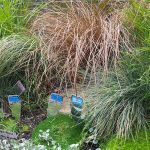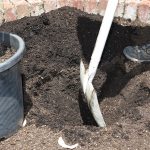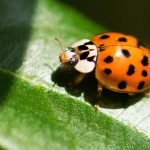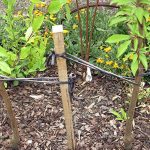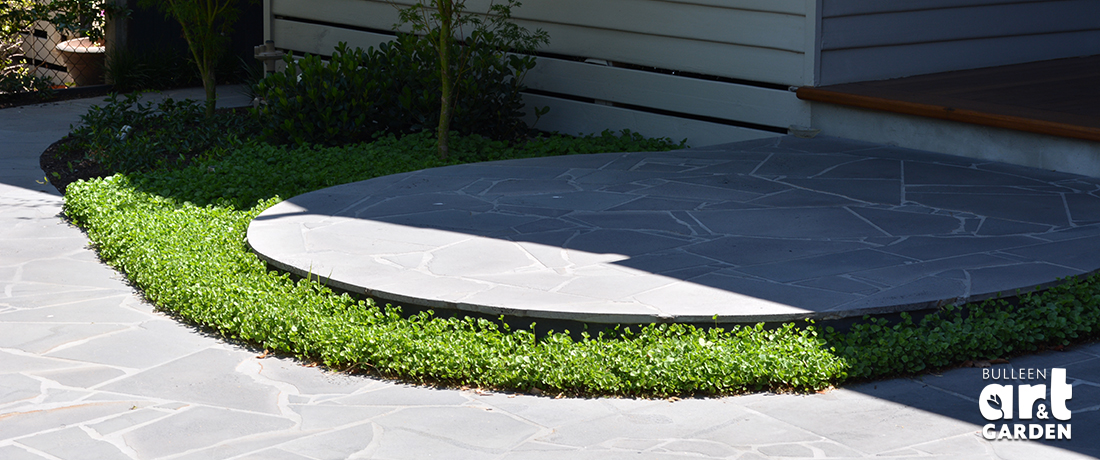
 Important note about plant availability. Important note about plant availability.There are hundreds of factsheets on our website provided for your information. Not all plants will be available at all times throughout the year. To confirm availability please call (03) 8850 3030 and ask for the nursery. |
Lawn alternatives are a group of plant species far more suited to our growing conditions than traditional lawns. They can be used as a beautiful and practical substitute for your open spaces. So why not plant species that require little to know additional irrigation, look great, and are better for the environment. Who wants to spend their free time mowing? Here are some great lawn replacement ideas to get you thinking…
Lawn Alternative Display Gardens
We have a couple of established Lawn Alternative working displays at Bulleen Art & Garden. These will give you an idea of what many of the planting options will look like in your garden once they are established. Come down, have a look and be inspired.
So where do I start?
The following guides will give you an idea of the type of plants you will need to use depending on what kind of effect you are trying to achieve.
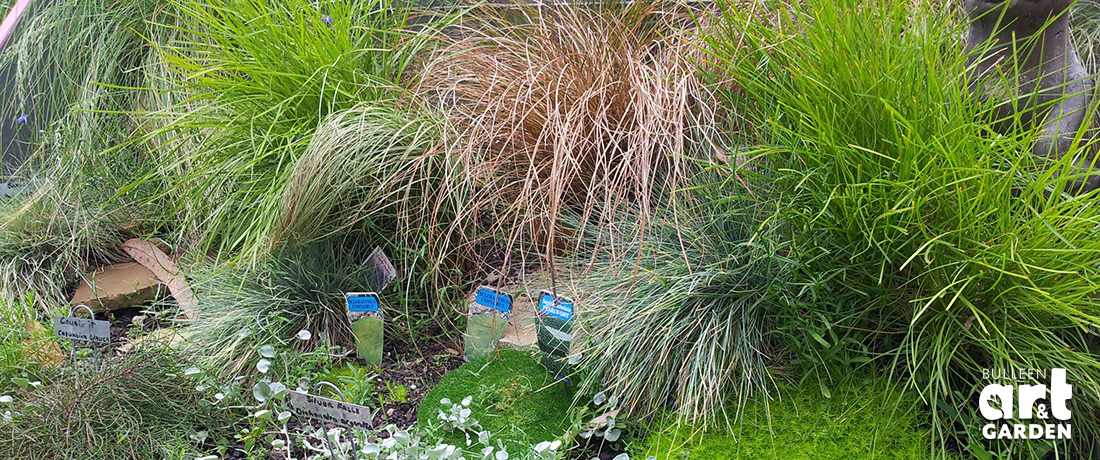
No Traffic (NT)
Plants for no traffic areas mean just that… they won’t take kindly to being stomped all over. However, no traffic areas allow for an enormous amount of flexibility when it comes to planting style and plant choice, and can look absolutely fantastic when complete. Consider planting no traffic species in an area where lawn may have been difficult to establish, such as regions under large trees or sloping banks. As well as creating a visual feast, these types of areas can often become great habitat for our native birds and butterflies.
Light Traffic (LT)
Light traffic plants are those which will tolerate and bounce back from small amounts of disturbance. Generally, the plants utilised in these styles of plantings are low lying, and somewhat flexible, allowing them to bounce back when trodden on. If the traffic through these areas is going to be a little heavier, try utilising stepping stones through the planting. This will not only look great, but allow for significant movement through the landscape.
Meadow “Lawn” areas (ML)
A planting for the brave, these meadow lawn areas contain a mixture of lilies, grasses, wildflowers and ground covers. To encourage flowering, these types of areas can be mown twice a year, generally utilising a brush cutter. These areas look amazing, and create such a beautiful, natural-looking landscape that will be the envy of your neighbours. Plant species should be grouped together in drifts, as mass plantings in these spaces work best. Don’t forget to throw in some pavers to allow traffic through the area.
Lawn (L)
If you really want a lawn, then these plants are for you. The can be planted in the same way your old fashioned lawns can be, but require less, or no, mowing, and use far less water then the more common alternatives. They look great, and are suitable for medium level traffic. Many native options are also listed.
Grasses and Strappy Foliage
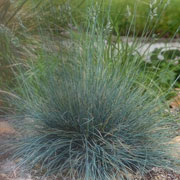 Blue Fescue (LT) Festuca glauca Very narrow foliage ranges in colour from silvery-white to blue-grey. Prune back in autumn if required. Clump-forming European grass. Insignificant flowers in summer. Suitable for rockeries, containers, low borders. |
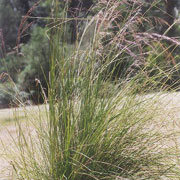 Common Tussock Grass (ML) Poa labillardieri Forms large, dense tufts with rough, bright-green to grey-green leaves. Many forms. Colour changes with season/age. Green to purplish flattened spikelets along the branches from October to February. Grow in open areas and around low shrubs. Guaranteed to attract wildlife. Can also be grown under Eucalypts. Highly adaptable grass. |
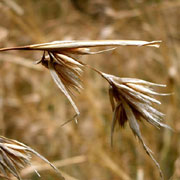 Kangaroo Grass (ML) Themeda triandra (syn. T. australis) Soft, erect or sprawling perennial tussock with narrow green, purple or blue leaves. A distinctive grass which forms extensive swards in native grasslands. Glossy, rust coloured spikelets on slightly arching stems from September to February. Plant en masse in flowering grasslands. Guaranteed to attract wildlife. Adaptable to a range of conditions. |
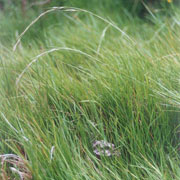 Weeping Grass (L) (ML) Microlaena stipioides Gracefully arching flower stems on a sparse, shortly rhizomatous perennial grass. Can be mown regulary to a few centimetres high. A great native lawn in moist, shady spots. Narrow, nodding spikelets of flowers to 20cm long on arching stems, from September to November. One of the best lawn grasses for shady sites. Guaranteed to attract wildlife. |
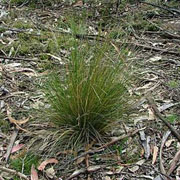 Wallaby Grass (L) (ML) Austrodanthonia sp. Erect tufted perennial grass with flattish leaves. Native to the eastern states of Australia. Highly tolerant of harsh soils and growing conditions. Provides textural interest and colour. Loose spikes of fluffy, purple flowerheads throughout the year. Guaranteed to attract wildlife. Should be considered as a lawn alternative as it tolerates mowing and traffic. |
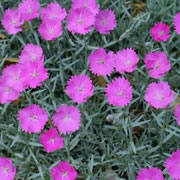 Dianthus (ML) (LT) Dianthus var. A small perennial groundcover with fine greyish or green foliage and attractive floral display. Frost tolerant. Requires free draining soil. Flowers of pink, mauve, burgundy and white mainly in spring and summer. Suitable for rockeries, pots or borders. |
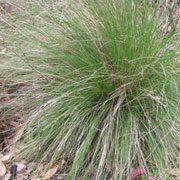 Blue Tussock Grass (ML) (LT) Poa poiformis var. poiformis Dense tufting grass with erect bluish leaves. Native to Vic, NSW, Tas, SA and WA. Propagate by seed or division. Requires well-drained sandy soil, tolerating some sea spray and salinity. Panicles of pale green-straw coloured spikelets from September to January. Good for coastal areas or mass planting. |
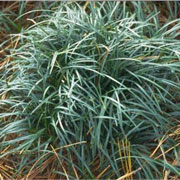 Mondo Grass (LT) (L) Ophiopogon japonicus Tufting, evergreen, grass-like plant with fine, dark green leaves. Spreads via rhizomes. Keep moist during dry weather. Produces small mauve flowers amongst the leaves in mid summer, followed by bright blue berries. Excellent border or edging plant for moist, well-drained soil. Plant at 20cm apart for fast coverage. |
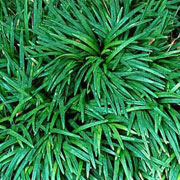 Dwarf Mondo Grass (LT) (L) Ophiopogon japonicus nanus Low-growing, tufting evergreen grass with dark green leaves, spreading via rhizomes. Keep moist during dry weather. Produces small mauve flowers amongst the leaves in mid summer, followed by bright blue berries. Neat plant useful for low edging or between paving. |
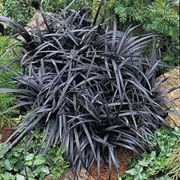 Black Mondo Grass (LT) (L) Ophiopogon planiscapus ‘Nigrescens’ Purple-black stiff leaves which form sparse, slow-spreading clumps. Keep moist during dry weather. Produces lilac flowers along the flower stem during summer, followed by black fruit. Great edging plant and useful foliage contrast. |
Ground Covers
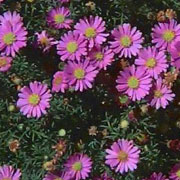 Break ‘o Day (NT) (ML) Brachyscome multifida Finely divided foliage and a long flowering period. Trim back in early spring to prevent open sprawl. Purple daisy flowers with yellow centres for most of the year. Useful for rockeries or as an attractive flowering ground cover or border. |
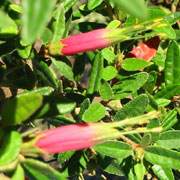 Correa or Native Fuchsia (NT) (ML) Correa decumbens A prostrate, spreading shrub with narrow, dark green leaves. Drought and frost tolerant. Originally from South Australia. Small red and green cigar shaped flowers held upright in late spring and summer. Forms a ground hugging plant. Useful for covering banks, in rockeries or as an edging plant. Guaranteed to attract wildlife. |
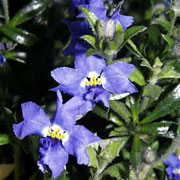 Kangaroo Lobelia (NT) (ML) Dampiera diversifolia Attractive flowers on a low ground cover. Drought and frost resistant once established. From South Western Australia. Bears brilliant blue flowers from spring to early summer. Use in rock gardens, on banks or edging borders and in hanging baskets. |
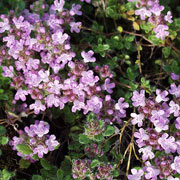 Woolly Thyme (LT) Thymus pseudolanuginosus (syn. T. lanuginosus) Very flat-growing groundcover with tiny, blue-grey soft leaves. Native to southern Europe and Asia. Traditionally associated with courage, strength, happiness and wellbeing. Terminal spikes of tubular, 2-lipped, pale pink flowers in mid-summer. Rockeries, edging, paving, banks or herb gardens. |
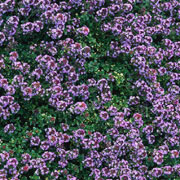 Creeping Thymes (LT) Thymus serpyllum var. Prostrate plant with tiny mat forming leaves, spring sees a mass of flowers in pinks, whites, or scarlets depending on which creeping time you choose. Needs sun and tolerates being dry. Butterflies and bees love the flowers. Edible leaves with a lemon fragrance. Great edging plant, for rockeries, paving, banks or herb gardens. Good in between pavers in a sunny area. Available as seed, in tubes, punnets and pots. Also the variety ‘Magic Carpet’ can be ordered in as a planting tile (33cm x 33cm) for an instant effect and for us who are too impatient to weed whilst waiting for it to spread and join up. |
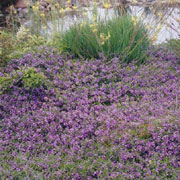 Mauve Clusters / Fan Flower (NT) (ML) Scaevola var. Evergreen spreading groundcover with bright-green foliage. Native to Australia. Propagate by cuttings or division. A mass of small mauve fan-shaped flowers are produced from summer to autumn. Great for garden edges, rockeries and containers. |
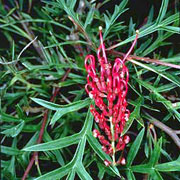 Grevillea Bronze Rambler (NT) Grevillea var. Ornamental pinnate foliage with beautiful bronze coloured new growth. Attractive to native birds. Tolerates heavy clay and sandy soils. Originated in Moe. Bears attractive red ‘toothbrush’ flowers throughout the year, but in more profusion in spring. Great for banks and rock pockets in hot and dry conditions. Ideal ground cover for large areas in native gardens. |
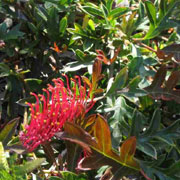 Grevillea Gaudi Chaudii (NT) Grevillea var. Ornamental foliage. New growth is deep red and attractive to birds. Trim back after flowering. A naturally-occurring hybrid between G. Acanthifolia and G. laurifolia. Bears purple-red toothbrush flowers for most of the year. Great for holding banks in hot dry areas. Ideal ground cover. Attracts birds. |
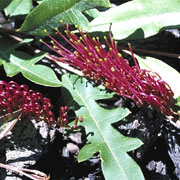 Grevillea Royal Mantle (NT) Grevillea var. Produces green and bronze evergreen, semi-weeping foliage and bird attracting flowers. Trim back after flowering. Bronze/red toothbrush-like flowers appearing from spring to autumn. Ideal for embankments and trailing over retaining walls. |
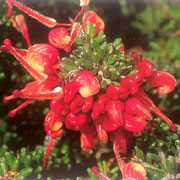 Grevillea Mt Tamboritha (NT) Grevillea var. Frost tolerant, evergreen prostrate grevillea. Flowers in winter. Has fine grey – green foliage covered in small hairs. Bears pink, white or red flowers in winter and spring. Ideal colourful groundcover with textured foliage and pretty cream and pink flowers in winter and spring. |
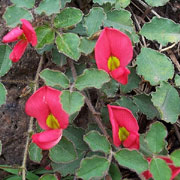 Running Postman (LT) (ML) Kennedia prostrata Open, trailing, matting, perennial groundcover with crinkly and hairy trifoliate, grey-green leaves. Recolonises in disturbed areas and after fire. Indigenous forms available. Native to Australia. Single scarlet pea flowers scattered along stems, from June to December. Grows well in a hanging basket, in rockeries and native gardens. Bird attracting. Great for softening garden edges. |
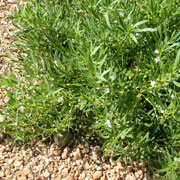 Creeping Boobialla (LT) Myoporum parvifolium Spreading groundcover with semi-succulent leaves and clusters of white, scented flowers in summer. Purple berries. Native to southern and western Victoria and Eastern South Australia. Propagate by division. Masses of small white tubular, honey-scented flowers along the spreading stems. Pink flowered forms available. Useful for binding soil, trailing over retaining walls, in rockeries or edgings. |
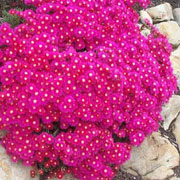 Pigface (NT) Mesembryanthemum A mat-forming plant with succulent pale grey-green leaves. Prefers well drained soils and benefits from spring fertilisation. From South Africa. Propagate by seed. Produces very decorative fine petalled daisy-like flowers in reds, orange, white, purple, pink and yellow in spring and summer. Ideal for hot, dry, sunny garden positions, rockeries or low maintenance areas. |
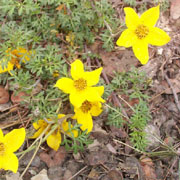 Bidens (LT) (ML) Bidens ferurifolia Dark green, delicate, fern-like foliage. Susceptible to heavy frosts. From Mexico and Arizona. Propagate by seed, cutting or division. Prune back hard periodically. Golden yellow rayed flower heads 25-35mm wide from spring to autumn. An excellent groundcover or rockery plant. Can also be used in hanging baskets. |
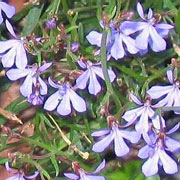 Angled Lobelia (NT) (ML) Lobelia alata (syn. Lobelia anceps) Small, erect, perennial groundcover with soft, narrow-toothed foliage. Spreads by layering. Native to Australia, Africa and South America. Propagate by seed or division. Small pale purplish-blue, fan-shaped flowers from November to March. Suitable for a bog garden. Grows naturally along river and creek banks. |
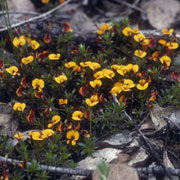 Matted Bush Pea (LT) (ML) Pultenaea pedunculata Forms a dense mat of tiny, flat, dark green leaves. Fast growing. Spreads by layering. A rare plant in the Melbourne region. Requires well drained soil. Single red and yellow pea flowers from September to December. Good for soil binding and for cascading over walls and rockeries. Neat mat forming plant useful for edging paths and borders. |
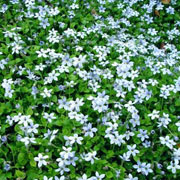 Isotoma (NT) Isotoma fluviatilis A low, mat-forming, Australian native ground-cover with dainty flowers. Fertilise in spring. Frost tolerant but drought sensitive. Propagate by division. Produces tiny blue star-shaped flowers throughout summer. Ideal for rockeries and borders in partly shaded locations. Pretty groundcover over rocks and between pavers in moist positions, or at the edges of ponds. |
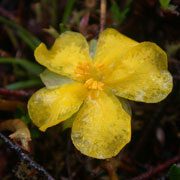 Spreading Guinea Flower (NT) (ML) Hibbertia procumbens A prostrate evergreen shrub with dark green foliage and brightly contrasting flowers. Bears masses of single, bright yellow flowers in spring and summer. Excellent in rockeries, small gardens or as tub specimens. |
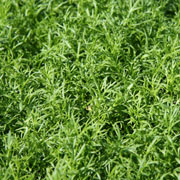 Chamomile – Lawn Flowering (Roman) (LT) Chamaemelum nobile Mat-forming, evergreen perennial with ferny, apple-scented foliage. White and gold flowers on tall stems in summer. Grow in sun or shade in free draining soil. Keep moist and cut back hard after flowering. Height 15cm x Width 45 cm. Flowers make a herbal tea for insomnia, digestion and fevers. Plant as a fragrant lawn. Makes a great companion plant and can be used to make a mild garden fungicide. Use this one as a lawn alternative and for medicinal purposes but German chamomile is a better tasting tea. |
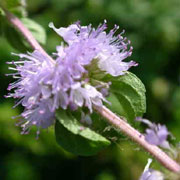 Pennyroyal (NT) Mentha pulegium A creeping perennial with highly aromatic leaves. In spring changes from a flat groundcover to an upright stand of tall flower stems with lavender whorls of flowers. Grow in a moist to wet soil, full sun to light shade. Cut back hard or mow after flowering. Can grow in a pot sitting in water. Use as a lawn alternative, between pavers and vegie gardens. Repels ants and fleas. Do not ingest while pregnant. Grow on the paths between the vegie beds to repel pests, soak up run off and supress weeds. |
Shade Loving Ground Covers
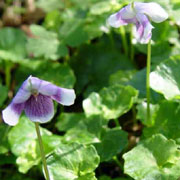 Australian Native Violet (LT) (ML) Viola hederacea Fast spreading, low ground cover for moist shaded areas. Light-green, kidney shaped foliage. Frost resistant but drought tender. Native to south-eastern Australia. Propagate by cutting or division. Dainty mauve / white flowers on short stems are borne all year round. Suitable for moist positions. Dark damp narrow areas down the sides of houses, garages, fences etc. In between pavers, and can be used as a lawn substitute in shaded areas with light traffic. |
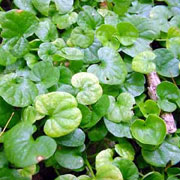 Kidney Weed (LT) Dichondra repens Dense, spreading herb with dark green, kidney-shaped leaves, rooting at nodes to form mats. Prefers moist but well draining soils. A vigorous groundcover which will act as a weed suppressent. Tiny, greenish-cream, insignificant flowers from September to December. Good alternative to lawn in shady areas where foot traffic is light. Great between pavers to soften edges. These can also be ordered in as fully grown ‘plant tiles’ (33cm x 33cm) for those who want instant gratification. |
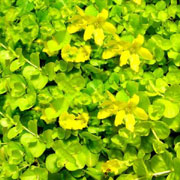 Creeping Jenny (NT) Lysimachia nummularia Strong yellow flowers on a dense groundcover for moist positions. Spreads rapidly by rhizomes. Native to much of Europe and Turkey. Propagate by cuttings. Bright yellow bowl-like flowers for a long period over summer. Excellent groundcover for semi-shady, moist areas. Tolerates occasional traffic. Great in hanging baskets in semi shaded areas. Also looks great in wall planters cascading down a shady wall. |
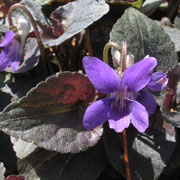 Purple-Leafed Wood Violet (NT) Viola labradorica Low-growing, spreading, evergreen groundcover with purple, heart-shaped leaves. Native to North America to Greenland. Propagate by division or cuttings. Light purple violet flowers in spring. Great for shady areas beneath shrubs or trees, between paving or path edgings. Can become invasive if not controlled. |
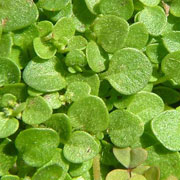 Corsican Mint (LT) Mentha requienii The miniature of mints, this perennial sits thickly like a moss on the ground. Its tiny heart shaped leaves have a rich aroma and flavour of peppermint. Grow in shade or semi-shade in moist soil in-between pavers or as a living groundcover in a shady spot. Will tolerate light traffic. Called the ‘Crème de Menthe’ plant and is used to flavour liquers and for fragrances. An fragrant alternative to moss, lawn or babies tears. Can be grown from seed, from tube stock, 14cm pots or ordered as plant tiles (33cm x 33cm) for an instant effect. |
Moss-like Ground Covers
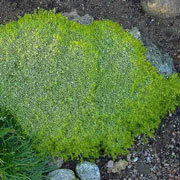 Golden Irish / Golden Scotch Moss (LT) Sagina subulata aurea Neat, dense, self-rooting, cushion-like groundcover with golden green leaves. Originating from northern temperate zones and requiring watering through hot periods. Propagate by division. Tiny white star flowers in late spring to summer. Great for filling spaces between paving, rock gardens and edges of garden beds. Around rocks edging a pond. Container plant and can be ordered in as ‘plant tiles’, (33cm x 33cm) for an instant effect. |
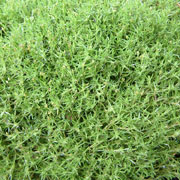 Knawel (LT) Scleranthus uniflorus Tough, bright-green, slowly spreading cushion of foliage. Native to alpine regions of Australia, New Zealand and South America. Propagate by seed, cuttings or division. Tiny, two-pronged flowers are produced during summer. Great for garden edges, rockeries and containers and around ponds. |
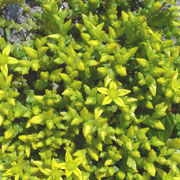 Common Stonecrop (NT) Sedum acre One of the hardiest of all succulents. Creeping stems of bright-green, moss-like leaves. Native to Europe, Turkey and North Africa. Propagate by division. Tiny yellow flowers cover the plant in spring. Useful plant for rockeries, embankments and garden edges. |
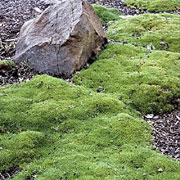 Emerald Cushion (LT) Scleranthus biflorus An attractive, moss-like cover that forms a dense cushion. Native to Australia, New Zealand and South America. Keep moist over warmer months. Flowers are tiny, greenish-brown and numerous and appear in summer. Excellent when grown around rocks, which it tends to grow over and cover. Suited to Native or Japanese style gardens. |
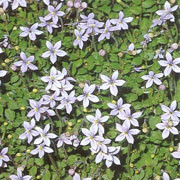 White Stars (LT, L) Pratia angulata A New Zealand native – very tough mat groundcover with white flowers early spring to summer. Sun to part shade. Great no mow lawn alternative as takes light to moderate traffic. Grows around 10cm tall. Available as a plant tile 33cm x 33cm – need to be ordered in. |
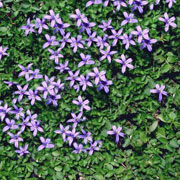 Pratia (LT, L) Pratia (Blue or White forms) Dark leaved carpeting plant with pretty floral display. Don’t allow to dry out over drier months. Native to Eastern Australia. Indigenous forms available. Propagate by division or seed. Attractive, five petalled blue or white flowers. Excellent for rockeries and borders and between rocks or pavers. Available as tubestock or in pots. Grows very tight to the ground. |

